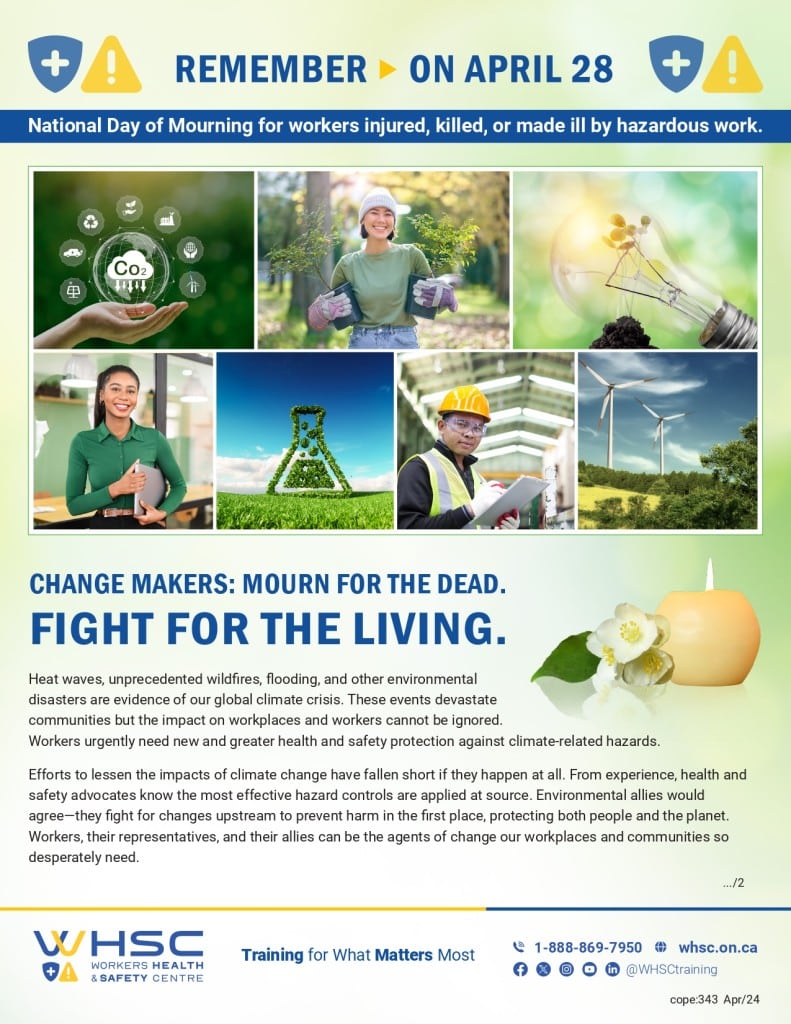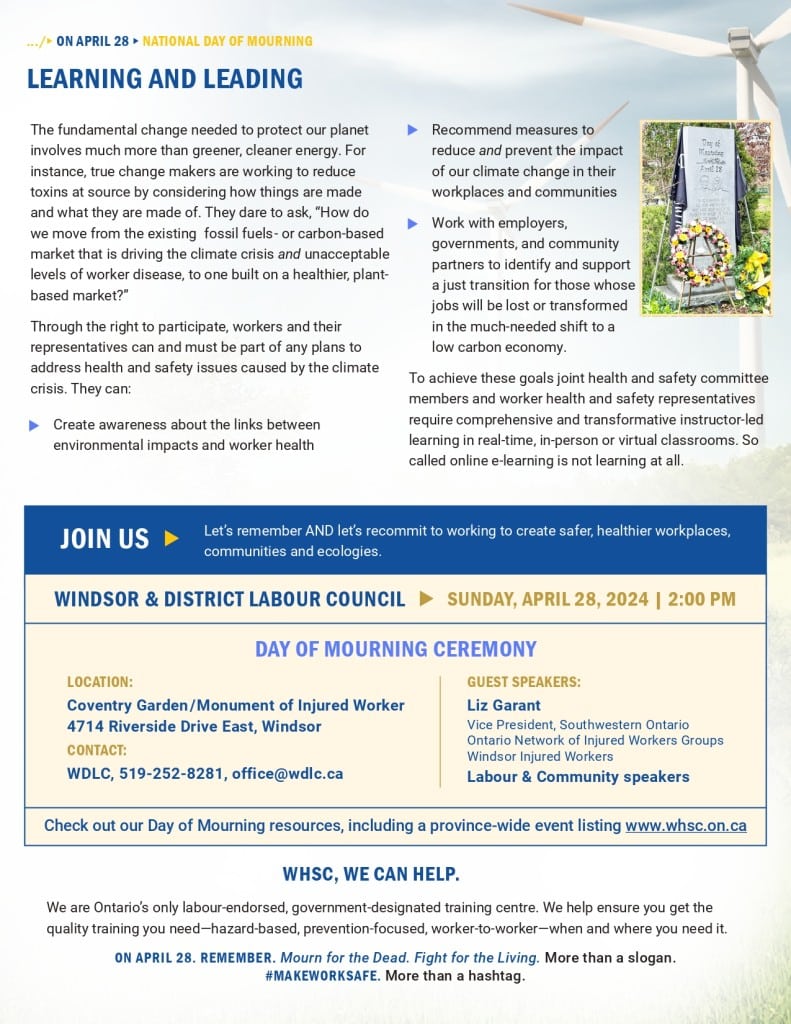

In the face of mounting evidence like heat waves, wildfires, and flooding, it’s impossible to deny the reality of our global climate crisis. These environmental disasters not only devastate communities but also profoundly affect workplaces and workers. Urgent action is needed to provide workers with enhanced health and safety protections against climate-related hazards.
Despite efforts to mitigate the impacts of climate change, they have often fallen short or been insufficient. Health and safety advocates understand that the most effective way to address hazards is at their source. This sentiment is shared by environmental allies who advocate for upstream changes to prevent harm, safeguarding both people and the planet.
Workers, along with their representatives and allies, can serve as the catalysts for the transformative change our workplaces and communities desperately need. The call to action is clear: mourn for the dead, but fight fiercely for the living.
The National Day of Mourning, observed on April 28, stands as a poignant reminder of the lives lost or affected by hazardous work conditions. It serves as a solemn occasion to reflect on the importance of workplace safety and the need for comprehensive measures to protect workers.
However, true progress requires more than just commemorating the fallen. It demands a fundamental shift in how we approach environmental and workplace safety issues. This shift entails not only transitioning to greener energy but also reimagining our entire production and consumption systems.
Change makers are advocating for the reduction of toxins at the source, questioning the materials used and the processes involved in manufacturing. They challenge the status quo, envisioning a transition from fossil fuel-driven economies to ones centered on sustainable, plant-based alternatives.
Crucially, workers and their representatives must have a seat at the table when crafting solutions to address the health and safety challenges posed by climate change. They can play a vital role in raising awareness about the connections between environmental degradation and worker health, recommending preventive measures, and collaborating with stakeholders for a just transition to a low-carbon economy.
Central to achieving these goals is the provision of comprehensive and transformative training for joint health and safety committee members and worker representatives. Real-time, instructor-led learning, whether in person or virtual, is essential for equipping them with the knowledge and skills needed to advocate effectively for safer workplaces.
Ontario’s labor-endorsed, government-designated training center stands ready to support this critical mission. By offering hazard-based, prevention-focused training tailored to the needs of workers, they ensure that individuals are empowered to make a meaningful difference in their workplaces and communities.
As we mark the Day of Mourning, let us not only remember the lives lost but also reaffirm our commitment to creating safer, healthier environments for all. Together, through collective action and unwavering dedication, we can build a future where every worker can thrive, and every workplace is a beacon of safety and sustainability.
